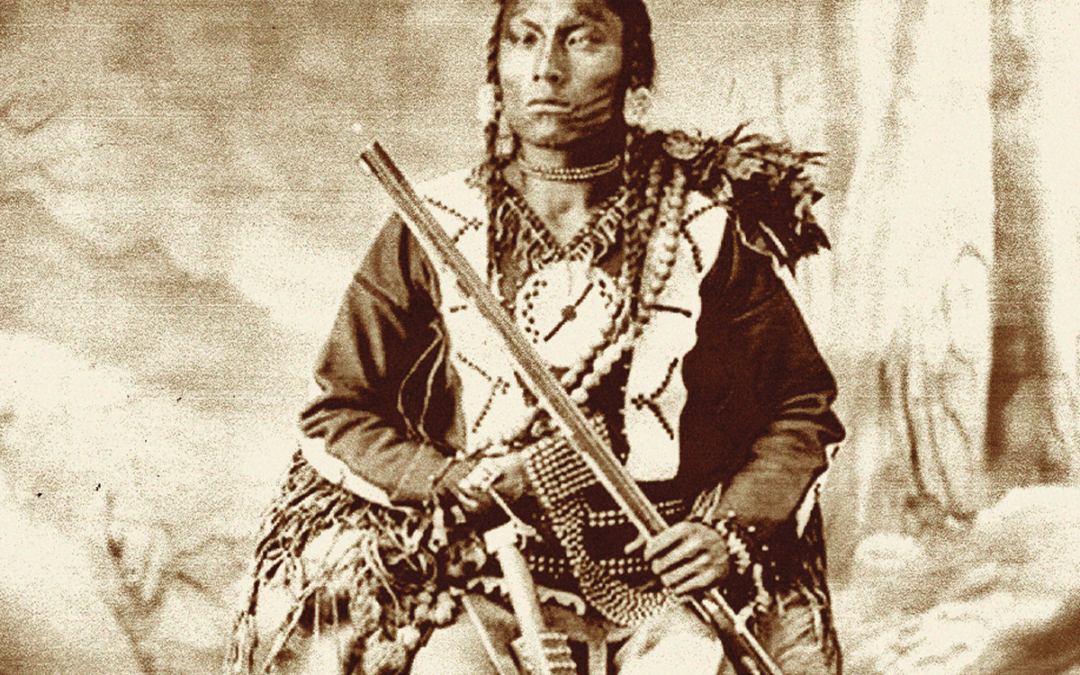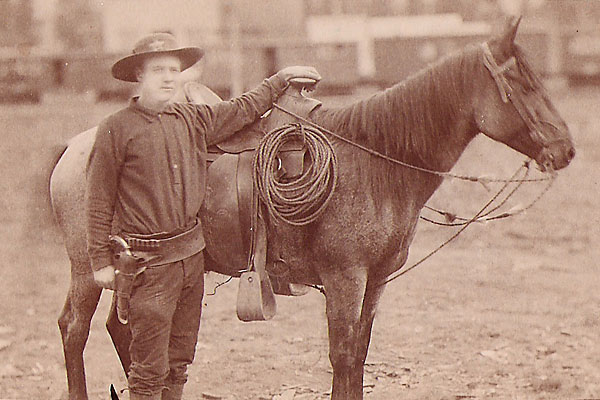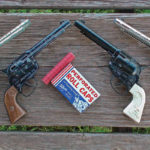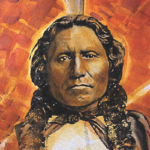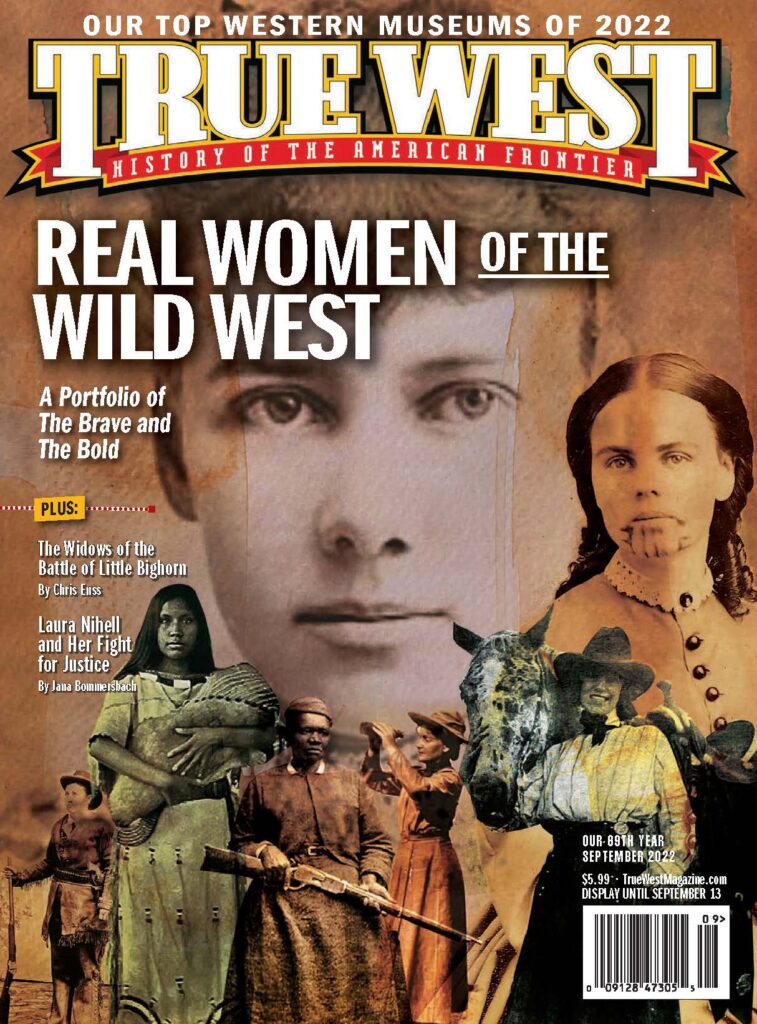Using brass or iron furniture tacks was one of American Indians’ favorite ways of dressing up their firearms.

Decorations on firearms and other weaponry are as old as firearms themselves. Examples of elaborately embellished guns can be found on European matchlocks and wheellocks, the jezails of the Middle East and miquelets of North Africa. In America, our earliest Pennsylvania rifles were often adorned with inlays, carvings and other enhancements to beautify or personalize them.
Although American Indians had long been decorating their primitive weapons with animal skins, feathers and other locally obtained materials, with the appearance of the White man’s goods on the frontier, tribesmen quickly found that simple brass and iron tacks, which were intended for holding cloth coverings on trunks and furniture, were ideally suited for personalizing firearms, tomahawks, war clubs, smoking pipes and other tools. Brass tacks rapidly became staples of the Indian trade up through the end of the 19th century. Traders sometimes decorated firearms beforehand to increase a gun’s appeal to a potential customer.
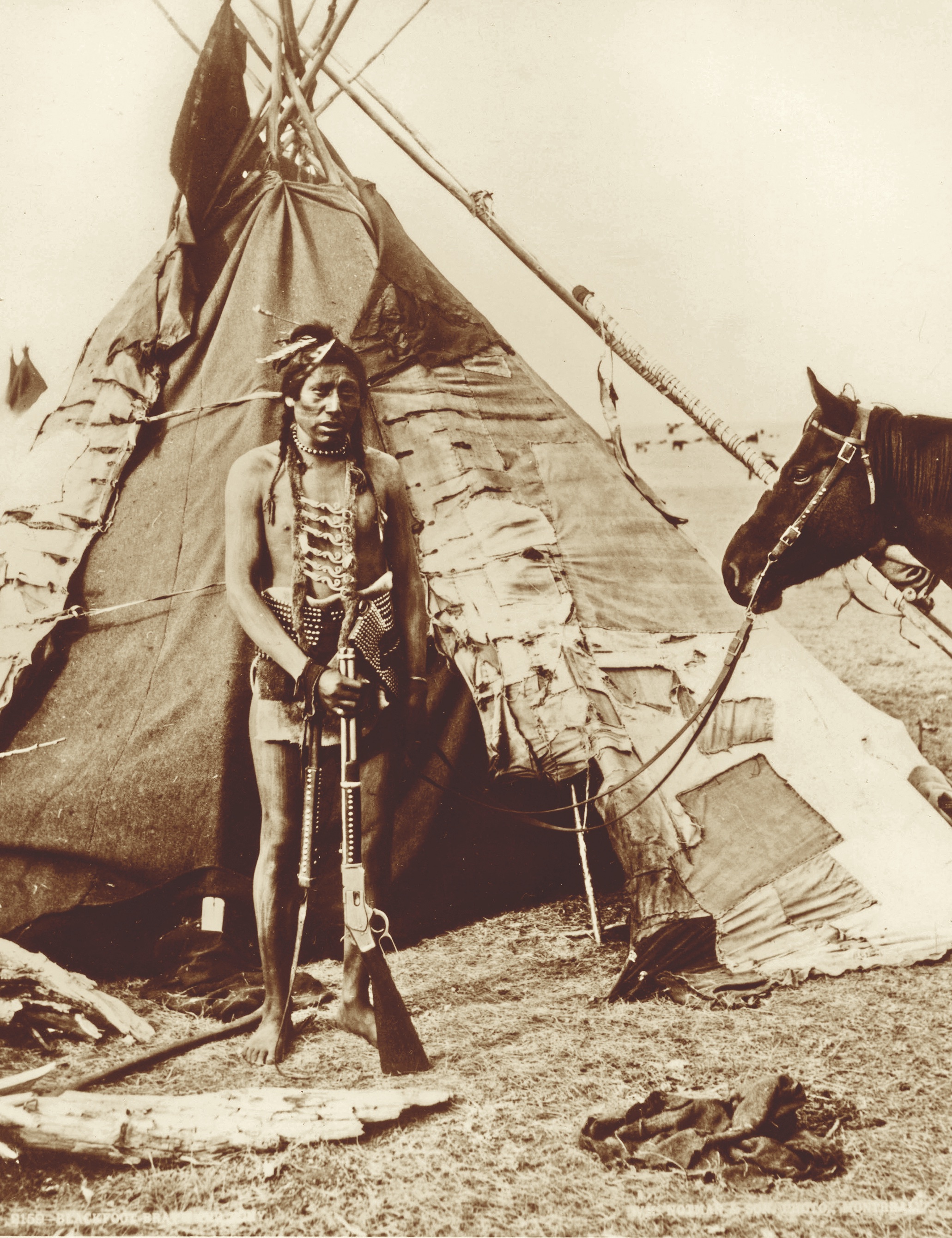
Studding or tacking a weapon was not only practiced by, or for, Native Americans. Many White explorers and mountain men also used common furniture tacks and inlays of German silver, mother of pearl, ivory, bone, brass and of course gold, silver and copper coins to personalize their arms. For example, one of Kit Carson’s half-stock rifles was adorned with inlays and tacks, while mountain man Mariano Modena favored a half-stock Hawken rifle that sported several inlaid metal stars around the edge of the gun’s patch box. This simple way of embellishing firearms continued well into the age of metallic cartridge arms and can be seen on many later shoulder arms and handguns like Winchester, Sharps, Spencer, Colt, S&W and others. The practice was also carried over to other gear like saddles, knife handles and scabbards, holsters, tomahawk handles, riding quirts, belts and a host of other frontier tools.
Commonly used designs in rifle and pistol stock tacking were the ever-popular five-point or “Texas” star, the federal shield, Christian cross, sunburst designs, arrows, serpentine, fish, birds and various other shapes. Some firearms sported literally hundreds of tacks, while others contained just a single, or perhaps a couple of studs, to mark its owner’s identity. Often, tacks were used not for decorative purposes, but simply to repair or reinforce a broken or cracked rawhide-wrapped rifle stock.
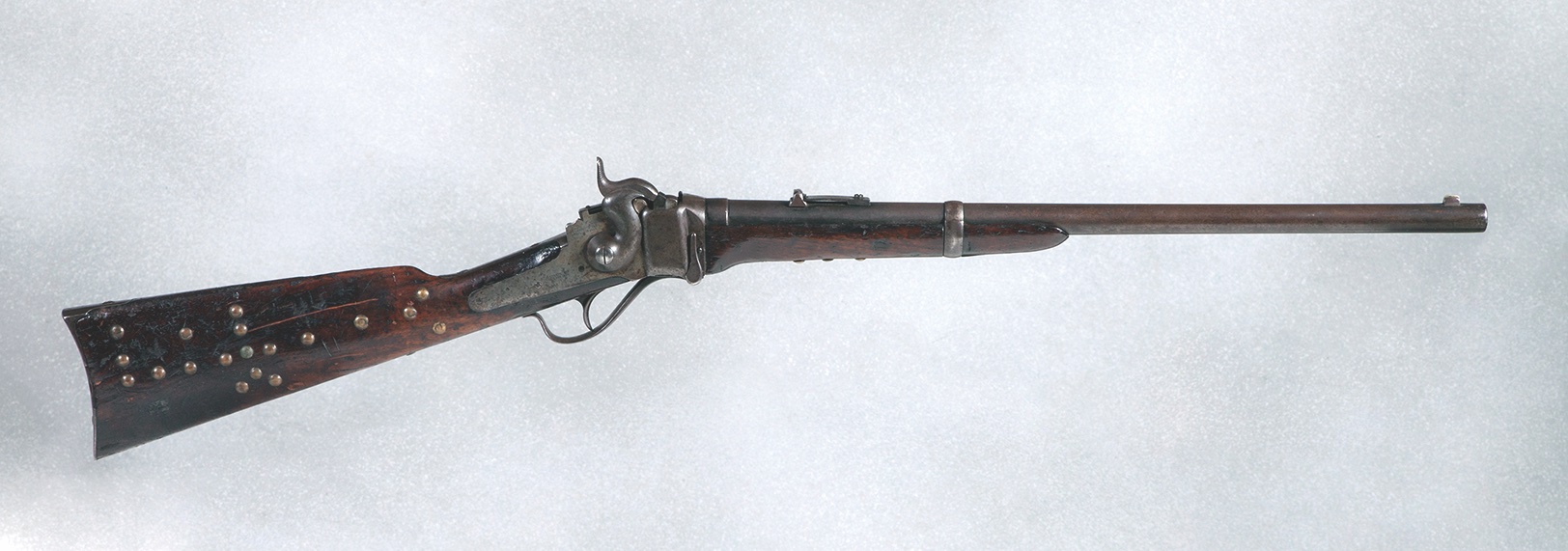
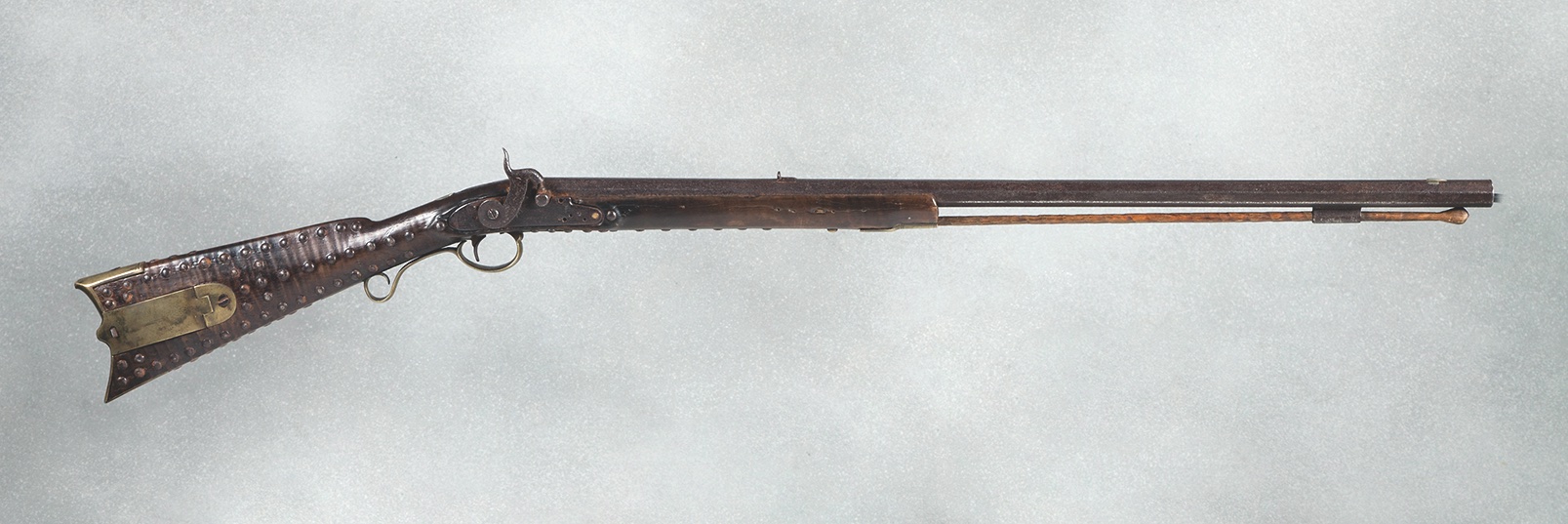
Brass was by far the most popular type of tack or stud used, as it could be polished brightly and the yellow metal retained its color and would not rust as did the iron tacks. Although dome-headed tacks most often dressed up Indian arms, sometimes brass or steel-tack shanks were driven into the item to be adorned, and then the rounded tack’s head was sheared off, leaving the shank flush with the surface of the object. This allowed the use of many tacks spaced closer together, offering a more intricate design. Several other forms of firearms and gear adornment were employed on the American frontier. Carving, rawhide wrapping, animal skins and charms—beads, feathers, medallions or even an enemy’s trigger finger—hanging from the gun’s trigger guard, might bedeck an Indian’s firearm. However, brass tacking a gun stock was by far the Indians’ favorite form of enhancing their “fire sticks.” While most documented Indian-owned firearms remain unadorned, the cool-looking weapons studded with tacks have come to boldly epitomize the “Indian gun.”

This tack-decorated 1866 Winchester carbine has been forensically proven to have been used at Lieutenant Colonel Custer’s infamous Little Bighorn fight, June 25, 1876. What appears to be a human figure, along with a row of brass tacks following the contour of the butt plate, dresses up the butt stock’s right side. The opposite side (not shown) simply has a row of tacks following the butt plate’s contour, and a simple row of three lone brass tack along the wrist, just below the comb of the stock. Courtesy Glen Swanson Collection
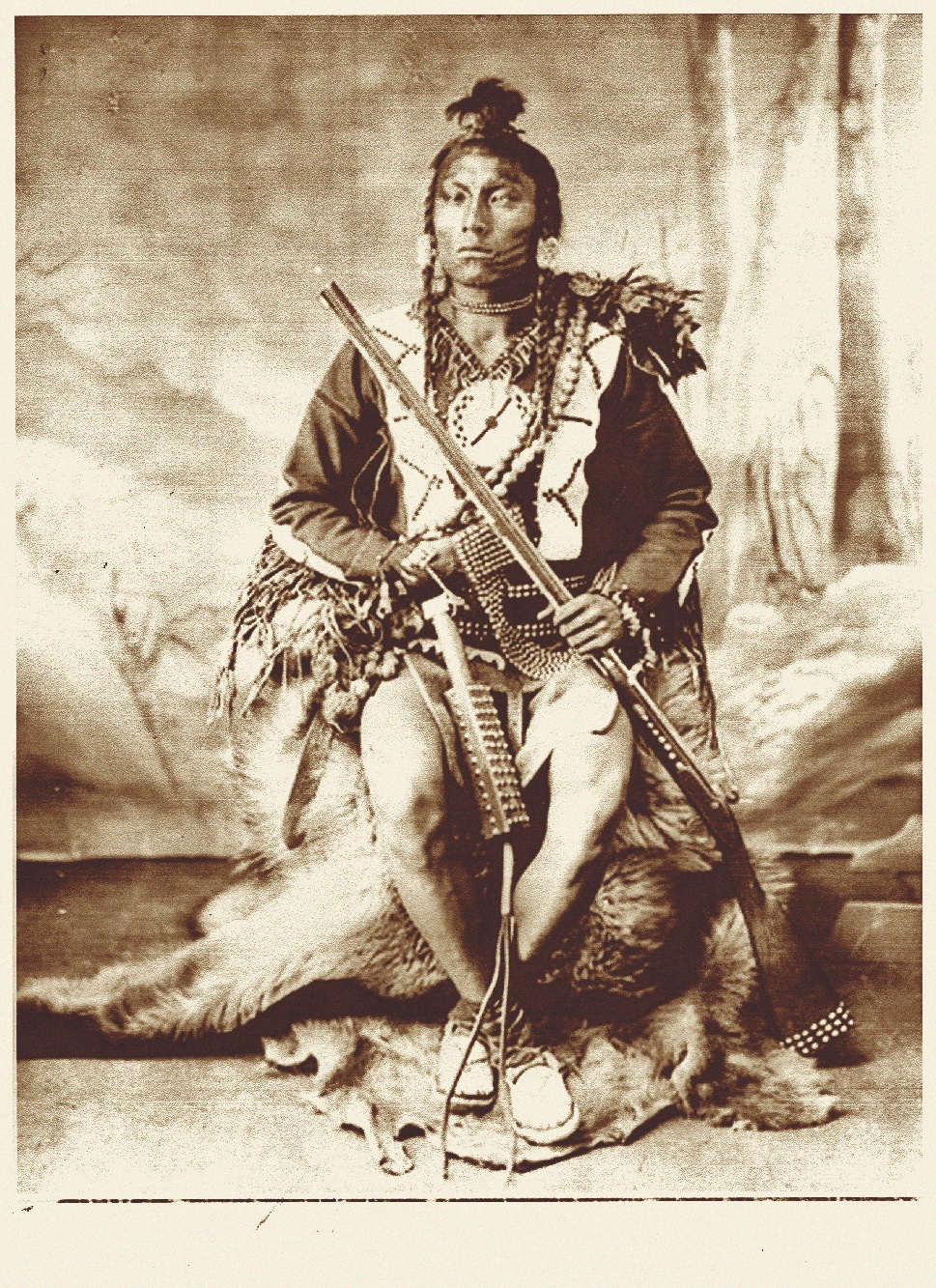
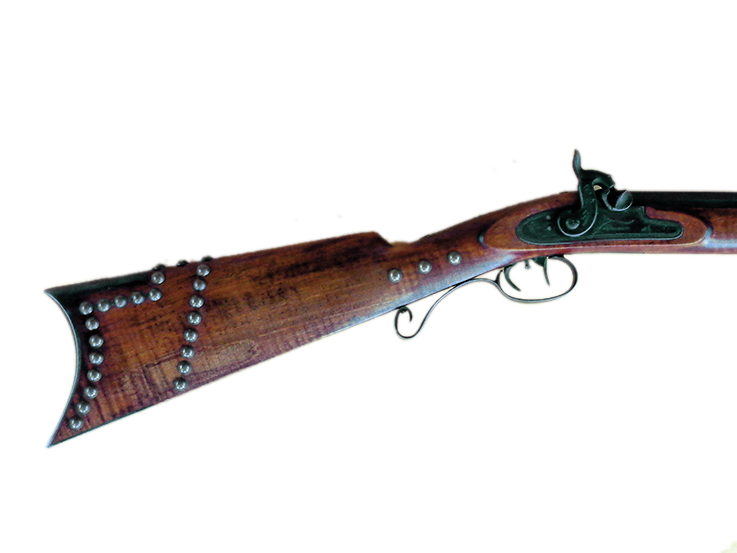
Decorate your replica smoke pole with brass tacks or period inlays and give it the looks of an Indian-owned or frontier original, like the Green River Rifle Works Hawken shown here. Here are a couple of outfits that can supply what you’d need. For an authentic look, use only solid brass tacks, not brass-plated tacks, from which the brass finish can eventually wear off. Crazy Crow Trading Post (CrazyCrow.com) offers a selection of old-style, dome-head, solid brass tacks and other American Indian and reenactor supplies. Although Dixie Gun Works (DixieGunworks.com) no longer stocks brass tacks, they do offer a wide selection of die-cut brass or German silver, period-type gunstock inlays.

